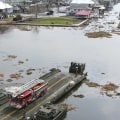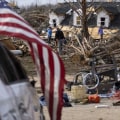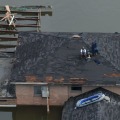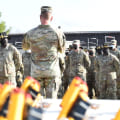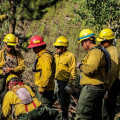Louisiana schools are responsible for the safety and care of students during emergency situations, such as natural disasters or other potential hazards. To ensure that personnel have access to necessary facilities during an emergency, the Louisiana Department of Education (LDOE) encourages all Local Education Agencies (LEAs) to designate a point of contact for emergency preparedness and recovery. This contact acts as the person responsible for entering and maintaining emergency preparedness and recovery information for the LEA. In the event of an impending emergency, the LDOE will contact the designated emergency preparedness and recovery representative to remind them to complete and maintain the emergency preparedness and recovery panel. The State Emergency Operations Center (SEOC) is a state-of-the-art command and control center located in Baton Rouge that coordinates and manages disaster planning, response, and mitigation of critical incidents.
The SEOC can be activated in response to natural disasters, severe weather events, man-made disasters, terrorist threats, or other major events or emergencies. The Louisiana Department of Children and Family Services (DCFS) is responsible for managing state shelters for people with critical transportation needs, special medical needs, sex offenders, unaccompanied minors, and the general population who request it. In accordance with the National Incident Management System (NIMS) and the National Response Plan (NRP), federal and state agencies create their command and coordination structures to support local command and coordination structures during an emergency. In accordance with the State Emergency Operations Plan, DCFS coordinates with local, parish, tribal governments, state and federal entities, support agencies, and non-governmental organizations to address the needs of non-medical mass care, emergency assistance, housing, and human services of disaster victims. Assistance to foreign citizens is not included in their response planning. After Hurricane Katrina made landfall in 2005, state and local authorities lacked the ability to communicate with each other due to destruction of infrastructure and response capacities. The Unified Command Group (UCG) provides a unified and coordinated approach to the management of emergency incidents.
This allows institutions, government authorities, and agencies with different legal, geographical, and functional responsibilities to coordinate, plan, and interact effectively. The REMS Technical Assistance Center website contains free resources, training, and technical assistance for schools and their community partners on emergency planning and responding to infectious disease outbreaks. When an Emergency Management Plan is activated, people assigned to security functions are responsible for closing all exits and entrances except for ambulances entering. The hospital will contact Region 5 or the parish office of the Office of Emergency Preparedness (OEP) to obtain medications and related supplies needed during the response and recovery phase of an emergency. This includes accessing shelters accumulated by its branches or local, state or federal sources. The 6-step Access Readiness and Emergency Management for Schools (REMS) process creates plans to continuously build and promote safe and healthy school communities before, during, and after potential emergencies.
The process takes into account the need to coordinate efforts to protect and restore critical infrastructure in all Emergency Support Functions (ESF). The Emergency Management Institute offers self-paced courses designed for people who have emergency management responsibilities as well as for the general public.

